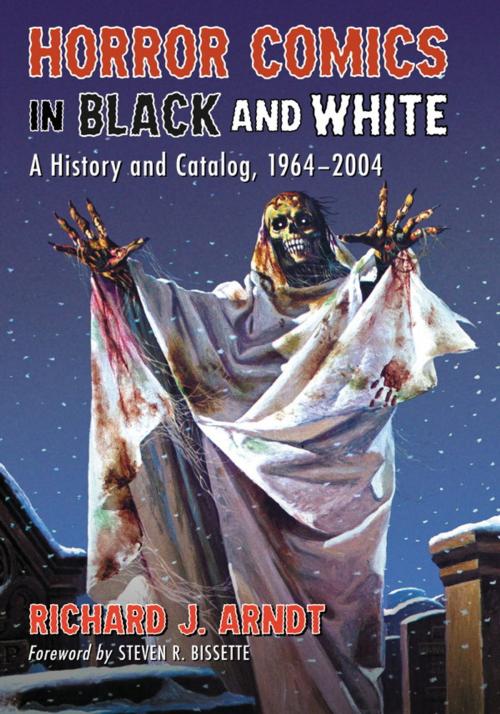Horror Comics in Black and White
A History and Catalog, 1964-2004
Fiction & Literature, Literary Theory & Criticism, Nonfiction, Reference & Language, Reference| Author: | Richard J. Arndt | ISBN: | 9780786493159 |
| Publisher: | McFarland & Company, Inc., Publishers | Publication: | January 4, 2013 |
| Imprint: | Language: | English |
| Author: | Richard J. Arndt |
| ISBN: | 9780786493159 |
| Publisher: | McFarland & Company, Inc., Publishers |
| Publication: | January 4, 2013 |
| Imprint: | |
| Language: | English |
In 1954, the comic book industry instituted the Comics Code, a set of self-regulatory guidelines imposed to placate public concern over gory and horrific comic book content, effectively banning genuine horror comics. Because the Code applied only to color comics, many artists and writers turned to black and white to circumvent the Code’s narrow confines. With the 1964 Creepy #1 from Warren Publishing, black-and-white horror comics experienced a revival continuing into the early 21st century, an important step in the maturation of the horror genre within the comics field as a whole. This generously illustrated work offers a comprehensive history and retrospective of the black-and-white horror comics that flourished on the newsstands from 1964 to 2004. With a catalog of original magazines, complete credits and insightful analysis, it highlights an important but overlooked period in the history of comics.
In 1954, the comic book industry instituted the Comics Code, a set of self-regulatory guidelines imposed to placate public concern over gory and horrific comic book content, effectively banning genuine horror comics. Because the Code applied only to color comics, many artists and writers turned to black and white to circumvent the Code’s narrow confines. With the 1964 Creepy #1 from Warren Publishing, black-and-white horror comics experienced a revival continuing into the early 21st century, an important step in the maturation of the horror genre within the comics field as a whole. This generously illustrated work offers a comprehensive history and retrospective of the black-and-white horror comics that flourished on the newsstands from 1964 to 2004. With a catalog of original magazines, complete credits and insightful analysis, it highlights an important but overlooked period in the history of comics.















